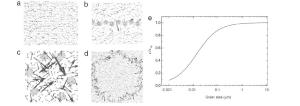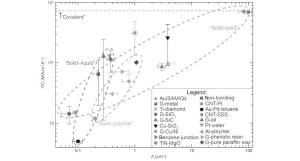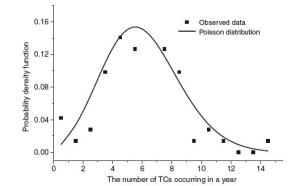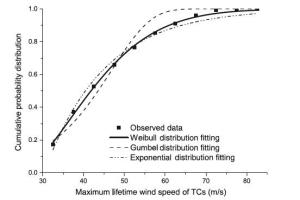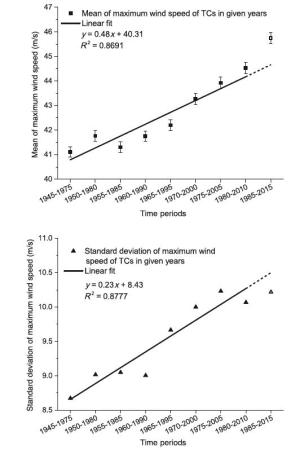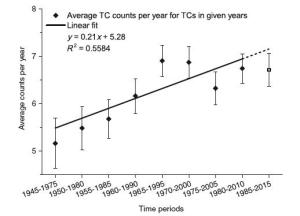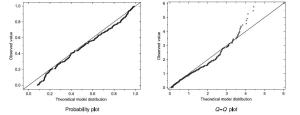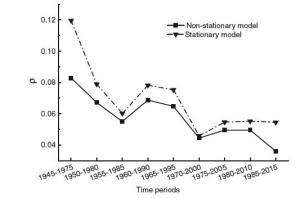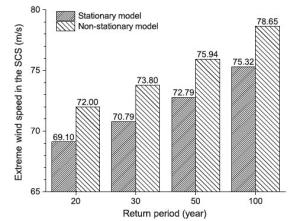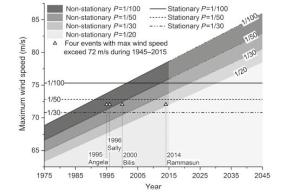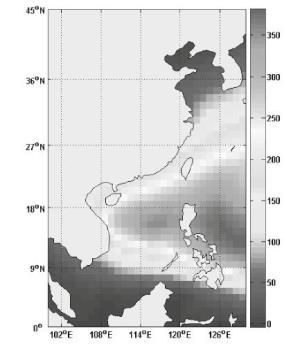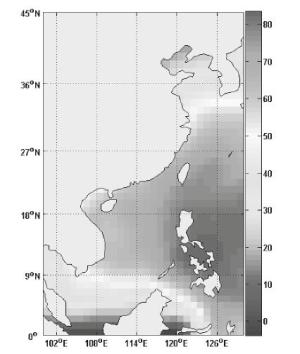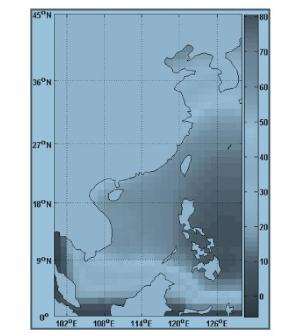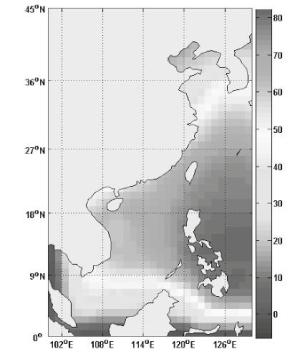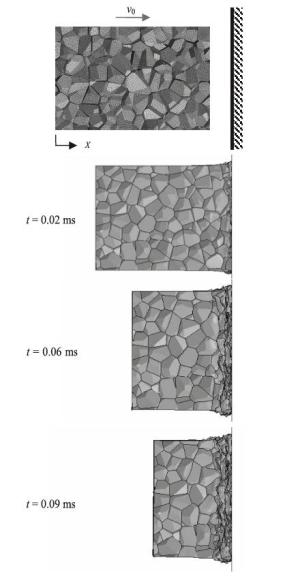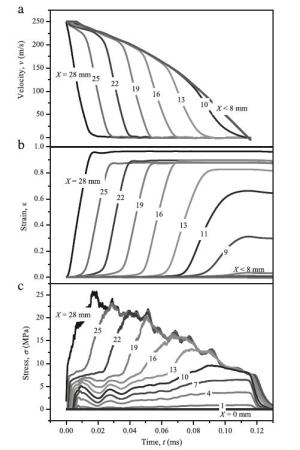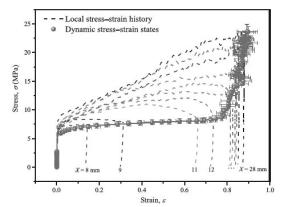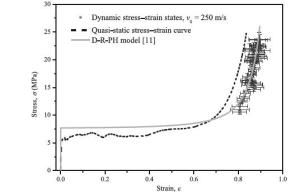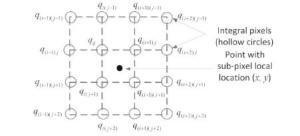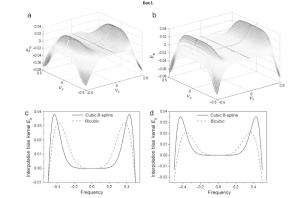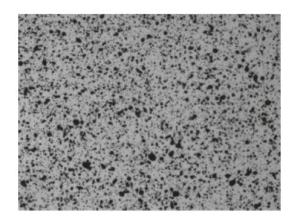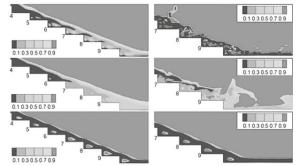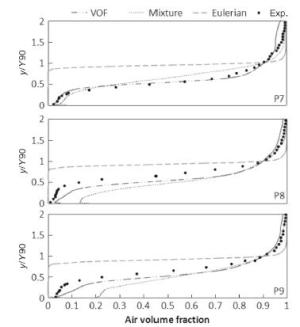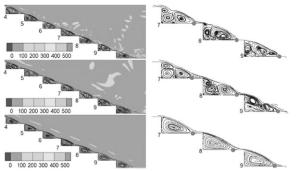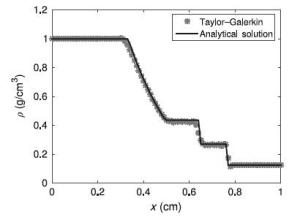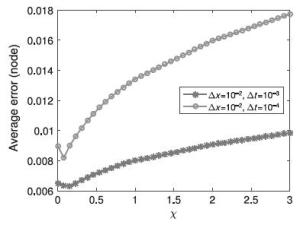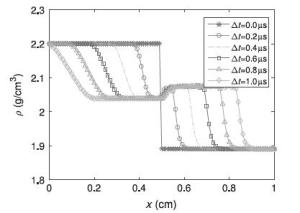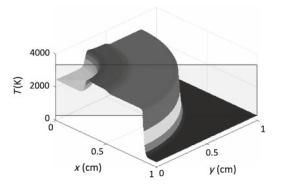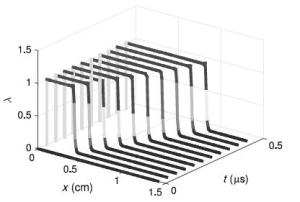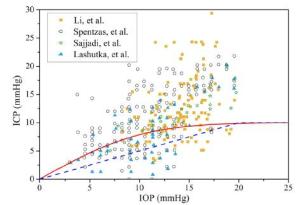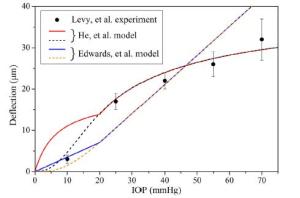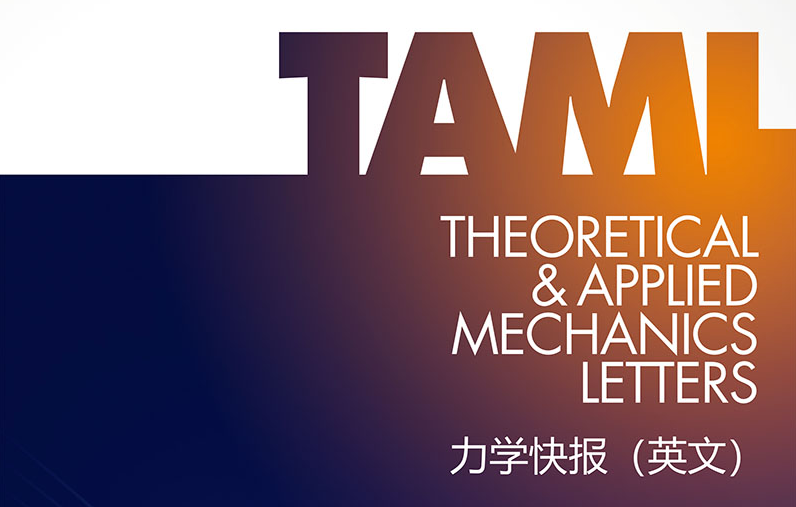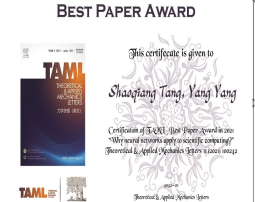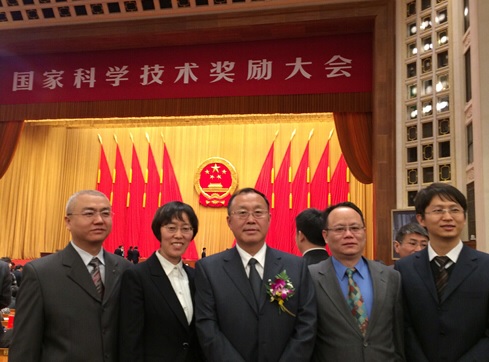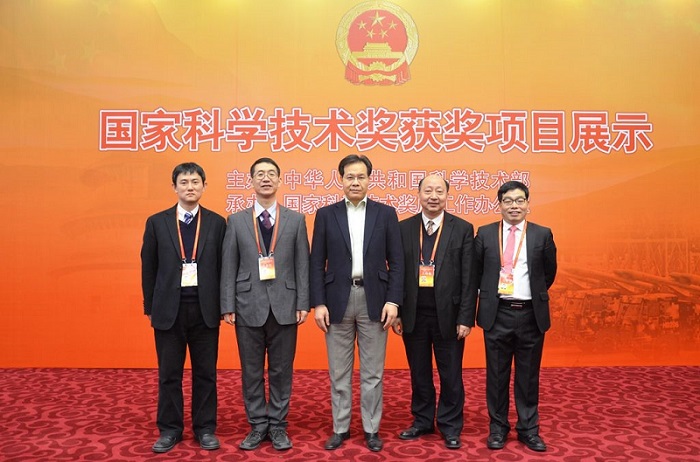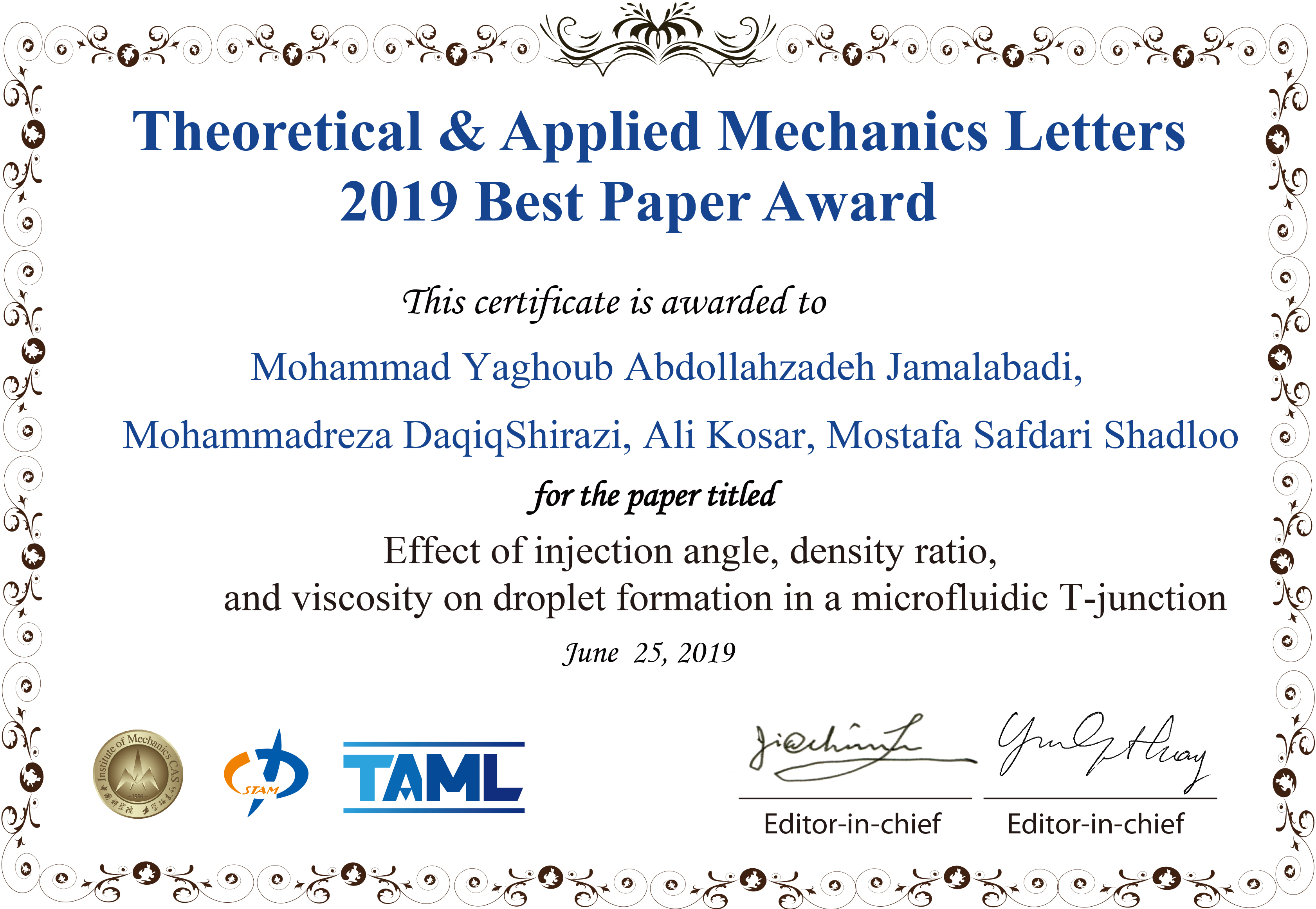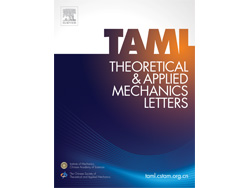Institute of Mechanics,
Chinese Academy of Sciences
2016 Vol.6(3)
Theoretical and Applied Mechanics Letters 2016, 6(3): 113-121.
doi: 10.1016/j.taml.2016.04.002
Abstract:
Heat transport is a key energetic process in materials and devices. The reduced sample size, low dimension of the problem and the rich spectrum of material imperfections introduce fruitful phenomena at nanoscale. In this review, we summarize recent progresses in the understanding of heat transport process in low-dimensional materials, with focus on the roles of defects, disorder, interfaces, and the quantummechanical effect. New physics uncovered from computational simulations, experimental studies, and predictable models will be reviewed, followed by a perspective on open challenges.
Heat transport is a key energetic process in materials and devices. The reduced sample size, low dimension of the problem and the rich spectrum of material imperfections introduce fruitful phenomena at nanoscale. In this review, we summarize recent progresses in the understanding of heat transport process in low-dimensional materials, with focus on the roles of defects, disorder, interfaces, and the quantummechanical effect. New physics uncovered from computational simulations, experimental studies, and predictable models will be reviewed, followed by a perspective on open challenges.
Theoretical and Applied Mechanics Letters 2016, 6(3): 131-138.
doi: 10.1016/j.taml.2016.04.001
Abstract:
In offshore engineering design, it is considerably significant to have an adequately accurate estimationof marine environmental parameters, in particular, the extreme wind speed of tropical cyclone (TC) withdifferent return periods to guarantee the safety in projected operating life period. Based on the 71-year(1945-2015) TC data in the Northwest Pacific (NWP) by the Joint Typhoon Warning Center (JTWC) ofUS, a notable growth of the TC intensity is observed in the context of climate change. The fact impliesthat the traditional stationary model might be incapable of predicting parameters in the extreme events.Therefore, a non-stationary model is proposed in this study to estimate extreme wind speed in the SouthChina Sea (SCS) and NWP. We find that the extreme wind speeds of different return periods exhibit anevident enhancement trend, for instance, the extreme wind speeds with different return periods by nonstationarymodel are 4.1%-4.4% higher than stationary ones in SCS. Also, the spatial distribution of extremewind speed in NWP has been examined with the same methodology by dividing the west sea areas ofthe NWP 0,-45°N, 105°E-130°E into 45 subareas of 5° × 5°, where oil and gas resources are abundant.Similarly, remarkable spacial in-homogeneity in the extreme wind speed is seen in this area: the extremewind speed with 50-year return period in the subarea (15°N-20°N, 115°E-120°E) of Zhongsha andDongsha Islands is 73.8 m/s, while that in the subarea of Yellow Sea (30,N-35,N, 120°E-125°E) is only47.1 m/s. As a result, the present study demonstrates that non-stationary and in-homogeneous effectsshould be taken into consideration in the estimation of extreme wind speed.
In offshore engineering design, it is considerably significant to have an adequately accurate estimationof marine environmental parameters, in particular, the extreme wind speed of tropical cyclone (TC) withdifferent return periods to guarantee the safety in projected operating life period. Based on the 71-year(1945-2015) TC data in the Northwest Pacific (NWP) by the Joint Typhoon Warning Center (JTWC) ofUS, a notable growth of the TC intensity is observed in the context of climate change. The fact impliesthat the traditional stationary model might be incapable of predicting parameters in the extreme events.Therefore, a non-stationary model is proposed in this study to estimate extreme wind speed in the SouthChina Sea (SCS) and NWP. We find that the extreme wind speeds of different return periods exhibit anevident enhancement trend, for instance, the extreme wind speeds with different return periods by nonstationarymodel are 4.1%-4.4% higher than stationary ones in SCS. Also, the spatial distribution of extremewind speed in NWP has been examined with the same methodology by dividing the west sea areas ofthe NWP 0,-45°N, 105°E-130°E into 45 subareas of 5° × 5°, where oil and gas resources are abundant.Similarly, remarkable spacial in-homogeneity in the extreme wind speed is seen in this area: the extremewind speed with 50-year return period in the subarea (15°N-20°N, 115°E-120°E) of Zhongsha andDongsha Islands is 73.8 m/s, while that in the subarea of Yellow Sea (30,N-35,N, 120°E-125°E) is only47.1 m/s. As a result, the present study demonstrates that non-stationary and in-homogeneous effectsshould be taken into consideration in the estimation of extreme wind speed.
Theoretical and Applied Mechanics Letters 2016, 6(3): 122-125.
doi: 10.1016/j.taml.2016.05.001
Abstract:
A virtual Taylor impact of cellular materials is analyzed with a wave propagation technique, i.e. the Lagrangian analysis method, of which the main advantage is that no pre-assumed constitutive relationship is required. Time histories of particle velocity, local strain, and stress profiles are calculated to present the local stress-strain history curves, from which the dynamic stress-strain states are obtained. The present results reveal that the dynamic-rigid-plastic hardening (D-R-PH) material model introduced in a previous study of our group is in good agreement with the dynamic stress-strain states under high loading rates obtained by the Lagrangian analysis method. It directly reflects the effectiveness and feasibility of the D-R-PH material model for the cellular materials under high loading rates.
A virtual Taylor impact of cellular materials is analyzed with a wave propagation technique, i.e. the Lagrangian analysis method, of which the main advantage is that no pre-assumed constitutive relationship is required. Time histories of particle velocity, local strain, and stress profiles are calculated to present the local stress-strain history curves, from which the dynamic stress-strain states are obtained. The present results reveal that the dynamic-rigid-plastic hardening (D-R-PH) material model introduced in a previous study of our group is in good agreement with the dynamic stress-strain states under high loading rates obtained by the Lagrangian analysis method. It directly reflects the effectiveness and feasibility of the D-R-PH material model for the cellular materials under high loading rates.
Theoretical and Applied Mechanics Letters 2016, 6(3): 126-130.
doi: 10.1016/j.taml.2016.04.003
Abstract:
Global look-up table strategy proposed recently has been proven to be an efficient method to accelerate the interpolation, which is the most time-consuming part in the iterative sub-pixel digital image correlation (DIC) algorithms. In this paper, a global look-up table strategy with cubic B-spline interpolation is developed for the DIC method based on the inverse compositional Gauss Newton (IC-GN) algorithm. The performance of this strategy, including accuracy, precision, and computation efficiency, is evaluated through a theoretical and experimental study, using the one with widely employed bicubic interpolation as a benchmark. The global look-up table strategy with cubic B-spline interpolation improves significantly the accuracy of the IC-GN algorithm-based DIC method compared with the one using the bicubic interpolation, at a trivial price of computation efficiency.
Global look-up table strategy proposed recently has been proven to be an efficient method to accelerate the interpolation, which is the most time-consuming part in the iterative sub-pixel digital image correlation (DIC) algorithms. In this paper, a global look-up table strategy with cubic B-spline interpolation is developed for the DIC method based on the inverse compositional Gauss Newton (IC-GN) algorithm. The performance of this strategy, including accuracy, precision, and computation efficiency, is evaluated through a theoretical and experimental study, using the one with widely employed bicubic interpolation as a benchmark. The global look-up table strategy with cubic B-spline interpolation improves significantly the accuracy of the IC-GN algorithm-based DIC method compared with the one using the bicubic interpolation, at a trivial price of computation efficiency.
Theoretical and Applied Mechanics Letters 2016, 6(3): 139-142.
doi: 10.1016/j.taml.2016.03.003
Abstract:
As a widely used flood energy dissipator, the stepped spillway can significantly dissipate the kinetic or hydraulic energy due to the air-entrainment in skimming flow over the steps. The free-surface aeration involves the sharp deformation of the free surface and the complex turbulent shear flows. In this study, the volume of fluid (VOF), mixture, and Eulerian methods are utilized to simulate the air-entrainment by coupling with the Reynolds-averaged Navier Stokes/large eddy simulation (RANS/LES) turbulence models. The free surface deformation, air volume fraction, pressure, and velocity are compared for the three different numerical methods. Only the Eulerian+RANS method fails to capture the free-surface aeration. The air volume fraction predicted by the VOF+LES method best matches the experimental measurement, while the mixture+LES method predicts the inception point of the air entrainment more accurately.
As a widely used flood energy dissipator, the stepped spillway can significantly dissipate the kinetic or hydraulic energy due to the air-entrainment in skimming flow over the steps. The free-surface aeration involves the sharp deformation of the free surface and the complex turbulent shear flows. In this study, the volume of fluid (VOF), mixture, and Eulerian methods are utilized to simulate the air-entrainment by coupling with the Reynolds-averaged Navier Stokes/large eddy simulation (RANS/LES) turbulence models. The free surface deformation, air volume fraction, pressure, and velocity are compared for the three different numerical methods. Only the Eulerian+RANS method fails to capture the free-surface aeration. The air volume fraction predicted by the VOF+LES method best matches the experimental measurement, while the mixture+LES method predicts the inception point of the air entrainment more accurately.
Theoretical and Applied Mechanics Letters 2016, 6(3): 143-147.
doi: 10.1016/j.taml.2016.05.002
Abstract:
Design of energetic materials is an exciting area in mechanics and materials science. Energetic composite materials are used as propellants, explosives, and fuel cell components. Energy release in these materials are accompanied by extreme events: shock waves travel at typical speeds of several thousand meters per second and the peak pressures can reach hundreds of gigapascals. In this paper, we develop a reactive dynamics code for modeling detonation wave features in one such material. The key contribution in this paper is an integrated algorithm to incorporate equations of state, Arrhenius kinetics, and mixing rules for particle detonation in a Taylor-Galerkin finite element simulation. We show that the scheme captures the distinct features of detonation waves, and the detonation velocity compares well with experiments reported in literature.
Design of energetic materials is an exciting area in mechanics and materials science. Energetic composite materials are used as propellants, explosives, and fuel cell components. Energy release in these materials are accompanied by extreme events: shock waves travel at typical speeds of several thousand meters per second and the peak pressures can reach hundreds of gigapascals. In this paper, we develop a reactive dynamics code for modeling detonation wave features in one such material. The key contribution in this paper is an integrated algorithm to incorporate equations of state, Arrhenius kinetics, and mixing rules for particle detonation in a Taylor-Galerkin finite element simulation. We show that the scheme captures the distinct features of detonation waves, and the detonation velocity compares well with experiments reported in literature.
Theoretical and Applied Mechanics Letters 2016, 6(3): 148-150.
doi: 10.1016/j.taml.2016.03.002
Abstract:
A modified relation between the intraocular and intracranial pressures is presented by employing the least square method to fit the existing experiments. Relative analysis here indicates that this modified relation not only is better than the previous relation by comparing with the existing experimental data but also overcomes the induced singularity in applying the existing mechanical models to compute the mechanical properties of the lamina cribrosa. The present study will be a beneficial help to understanding the relationship between the intraocular and intracranial pressures and even glaucomatous developing.
A modified relation between the intraocular and intracranial pressures is presented by employing the least square method to fit the existing experiments. Relative analysis here indicates that this modified relation not only is better than the previous relation by comparing with the existing experimental data but also overcomes the induced singularity in applying the existing mechanical models to compute the mechanical properties of the lamina cribrosa. The present study will be a beneficial help to understanding the relationship between the intraocular and intracranial pressures and even glaucomatous developing.
 Submit a Paper
Submit a Paper
 Subscription
Subscription
News
MORE+
Call for Papers
MORE+
- Crossing-Mechanics Driven by Big Data
- Machine learning in the fluid mechanics research of wind energy
- Mechanics of Origami/Kirigami structures and metamaterials
- New insights and perspectives on impact biomechanics for human tissues: from injury prevention, protection to protective equipment
- Environmental Mechanics for Extreme Natural Events




